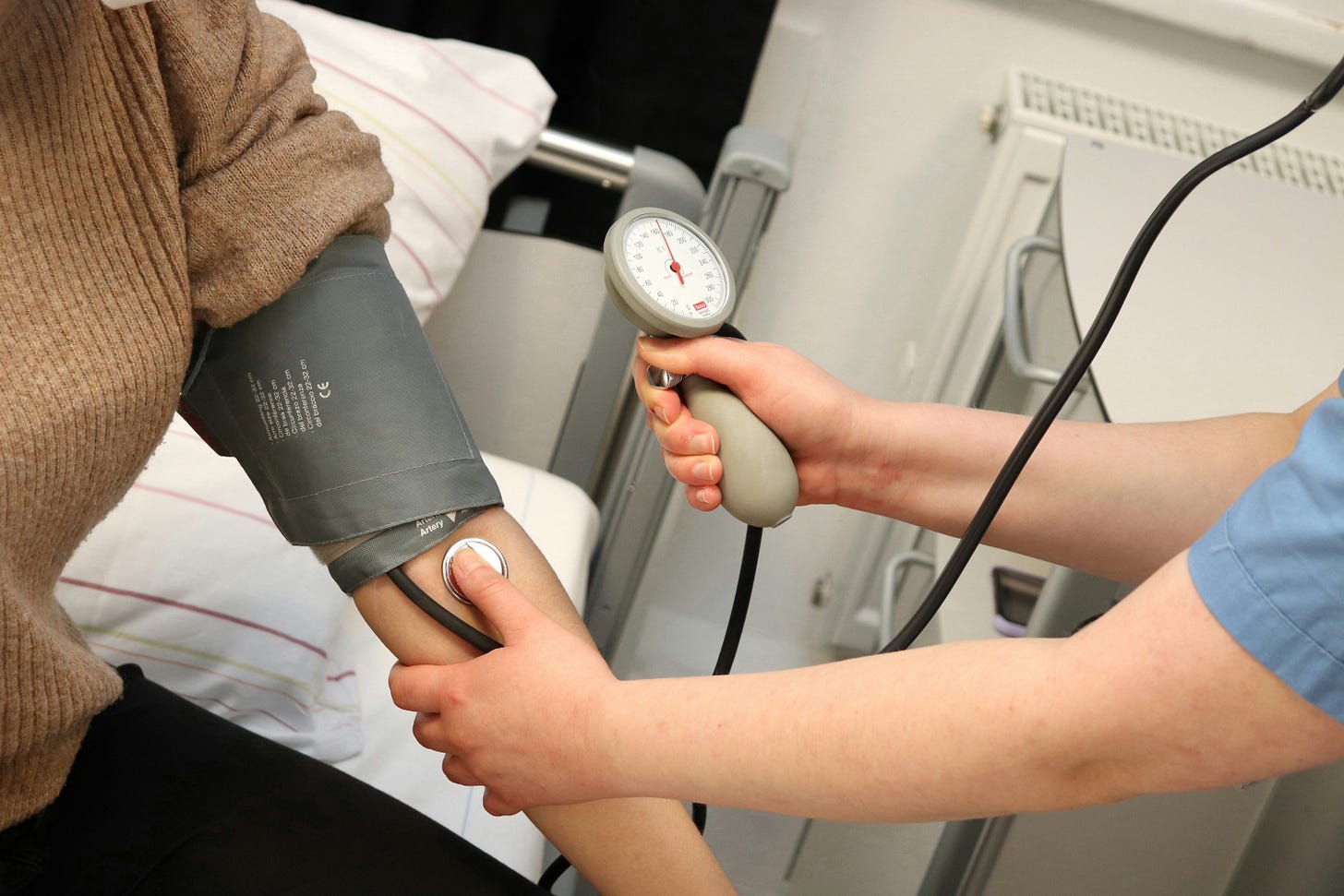Isometric exercises can reduce blood pressure
Research shows even simple hand grips may have beneficial impact
The following is informational and not intended as any sort of medical advice. Older adults should always consult with a physician before starting or changing a fitness/exercise routine.
It’s common knowledge that strenuous exercise helps cardiovascular health, including improved blood pressure.
The U.S. Centers for Disease Control estimate that nearly half of U.S. adults – 119.9 million, or 48.1 percent – have high blood pressure, defined as people who have systolic blood pressure greater than 130 mm Hg or a diastolic blood pressure greater than 80 mm Hg, or are taking medication to keep blood pressure below those limits.
That’s a large number of people who could benefit from exercising to reduce blood pressure. But not everyone is capable of strenuous cardio activity.

However, some research indicates that lower blood pressure also is associated with a simple, low-impact exercise that doesn’t involve full-body movement, called isometric handgrip exercise. This involves compressing an object with the hands, holding and then releasing it for a number of cycles or intervals of around 1 to 2 minutes.
Isometric exercise in general involves contracting muscles – without changing their length or moving the joints around them – by holding a static position against resistance. (The common abdominal exercise known as a plank is a good example.)
Benefits of isometric exercise
A growing body of research indicates isometric exercises can be helpful in reducing blood pressure. Seven researchers from the United Kingdom, who in 2023 examined 270 previous research studies with a total of 15,827 participants, concluded that “Overall, isometric exercise training is the most effective mode in reducing both systolic and diastolic blood pressure."
Isometric hand grips, which can be done with a spring device or even a soft “squish” ball, are one of the most commonly examined practices in this research. Results are mixed, but some studies have indicated benefits from this simple maneuver
For example, researchers from Columbia and Spain published a study in 2020 documenting that isometric handgrip exercise seemed to reduce blood pressure in subjects with hypertension, although the effects were greater on those younger than 45 years old, those who were overweight, and those already taking blood-pressure medication. Some of the same researchers, in a different study, also reported handgrip exercises reduced blood pressure in those with normal levels. “This type of exercise could be considered effective in preventing arterial hypertension,” they concluded.
Like the large British study, both of these reports examined and summarized previously published research about isometrics and blood pressure.
However, in another, similar systematic review, Brazilian researchers in 2022 found that for isometric handgrip exercise to be beneficial it must be performed consistently over time, which they referred to as isometric handgrip training.
Two further meta-studies, both from 2024, found isometric exercise in general was helpful in reducing blood pressure but had different views about the effectiveness of simple hand grips.
Hand grips may help, but research is mixed
One of those studies, by an international team of eight researchers, concluded that “the effectiveness of isometric handgrip training was higher than other exercise programs,” including aerobics, although they acknowledged that many factors such as duration of the exercise program, and the patients' gender and body mass index, could impact the effectiveness.
Another updated meta-review done in 2024 by a team of 20 researchers from multiple countries reported that "isometric exercise training is capable of producing blood pressure reductions greater than that observed (from) following the currently recommended exercise guidelines." However, this summary covered previous research into all types of isometrics’ impact on blood pressure, and reported that three studies specifically investigating handgrip exercise reported no changes in the subjects’ blood pressure.
The researchers reported that their work “suggests the wall squat may be the most effective form of isometric exercise training despite the handgrip protocol being the most widely studied” and the one with the greatest body of evidence collected about its effectiveness.
So, while the results are somewhat mixed, these researchers concluded that a regimen of simple handgrips might be beneficial in lowering blood pressure, which could be especially helpful for those who lack the strength to do things such as wall sits.
"While early indirect evidence suggests that handgrip isometric exercise training may not produce blood pressure changes of the same magnitude as that of lower-body isometric exercise training, it undoubtedly remains the most well-investigated mode with the strongest foundation of supporting evidence,” they wrote. “Handgrip isometric exercise training likely constitutes the most attractive and practically implementable mode, with utility in patients with cognitive, mobility or heightened cardiovascular risk concerns,” they added.
For many people, it might be time to dig out that long-forgotten squish ball in the back of a dresser drawer and start using it.

